The House Museums of the Masters of Milanese Architecture and Arts
Posted on 09 October in Milan Design Guide
Open House Milano, Milan Design Week, House Museum Milan, Italian interior design, Design Artists Milan, Italian interior designers, Milan Architecture, Milan Design City, milan design week 2021, milan luxury experience, milan interior design, milan art and design, Italian Design, best art and design in milan, iconic design milan, Italian Lifestyle
A selection of the most interesting House Museums in Milan belonging to the great Masters of Milanese Architecture and Design, but also Artists of the 900 and Art Collectors
Our round-up of the best Milanese Architecture home of Architects and Artists in Milan
The sixth edition of Open House Milano, just concluded, has been a great success. The international event of the Open House Worldwide network is an excellent opportunity for lovers of art, design and architecture to visit secret places in the city, rediscover homes and private studios of the Masters of Milanese architecture, as well as ateliers of artists or historic buildings home to famous Italian collectors.
Esperiri will take you on a discovery journey to introduce you to these hidden gems usually not accessible to the public. Our aim is to help you discover the design path of these masters who have transformed Milan into the “Great Milan” through iconic rooms and objects.
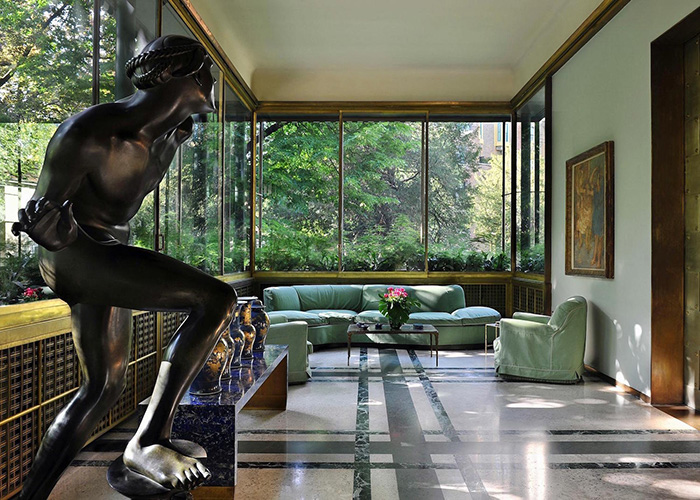
A look into the Milanese Architecture of 5 Architects and Designers
Fondazione Vico Magistretti
Vico Magistretti was a designer always in step with the times and an architect capable of interpreting the emerging needs of the new society. A multifaceted figure, of great inventiveness, whose objects entered people’s homes never to leave them, a real symbol of modernity.
The studio, situated in via Conservatorio 20 in Milan, was the beating heart of his production. The environment is small, intimate and shows in less than eighty square meters the place where he worked for his entire career. The studio, where the foundation is now based, is in the Magistretti district, located inside a building designed by his father, adjacent to one designed by Magistretti himself and close to another created by his great-grandfather.
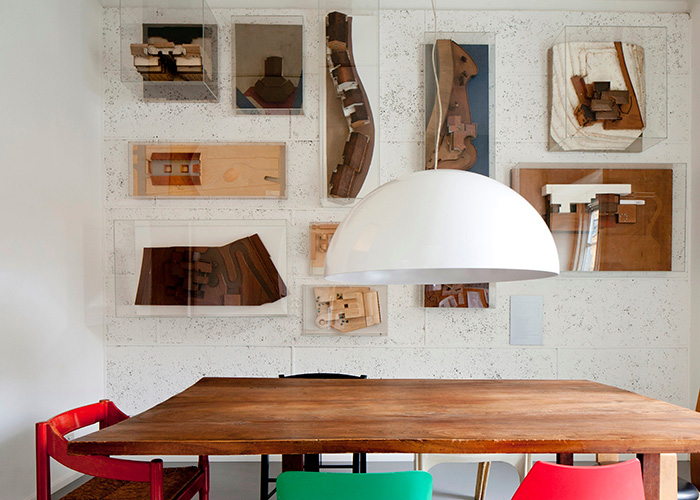
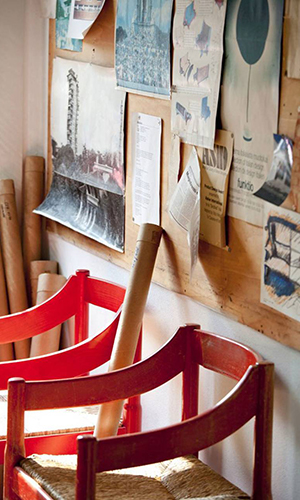
“Vico Magistretti Architetto milanese” is the exhibition held at the Triennale Design Museum, curated by Gabriele Neri, which reveals how Magistretti was able to launch Italian design in the world through architectural and design projects. An exhibition in which the narrative thread of the installation is the color red, the artist’s favorite both for big choices and small details. Through this color we can describe in a personal, but at the same time precise way, the personality and inspiration of Magistretti.
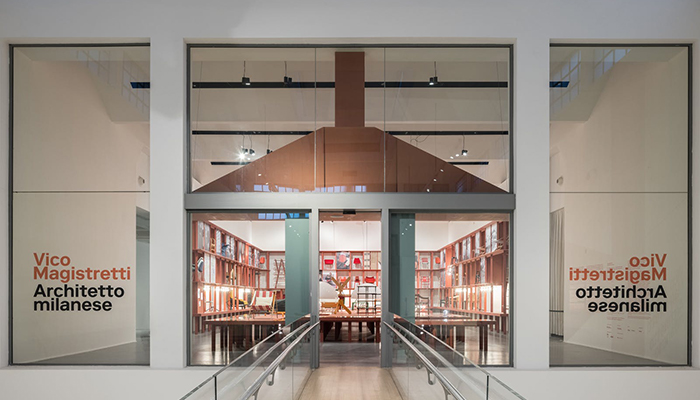
Some timeless creations of Magistretti’s production are Dalù, the lamp made for Artemide and inspired by the artist’s dachshund, and Carimate, a chair designed for Cassina in 1959, which takes inspiration partly from the Scandinavian tradition and partly from the reinterpretation of the popular chair made of wood and straw. Iconic is the Maralunga Sofa, the first sofa with a folding back by Cassina presented in 1974, with which Magistretti tackled the theme of the transformability of objects.
Fondazione Franco Albini
Franco Albini is an architect symbol of Milanese interior design and Italian Rationalism and Modernism, who opened his first studio in Milan in 1932, where he undertook an ethical and principled way of designing. His way of working is structured following a coherent, systematic thought and a method always contemporary, which make his projects effective and timeless. Albini’s studio is located in a neoclassical villa in Via Telesio, 13, Milan. The place, which was also Albini’s residence, is now a museum. This is where many of his most famous projects came to life.
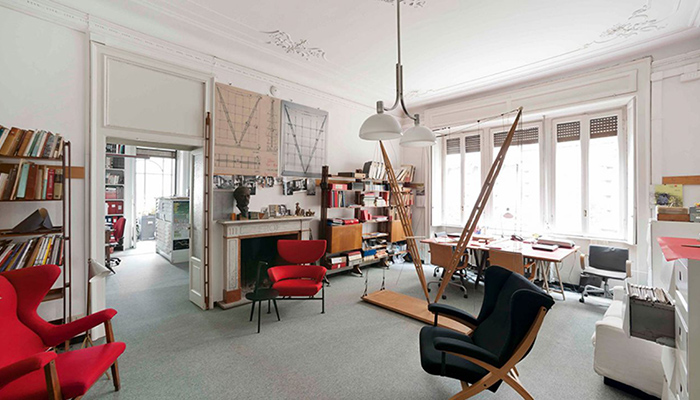
Veliero, an iconic creation of Albini’s modernism, is a bookcase produced by Cassina. Inspired by the image of a sailing ship, it reinvents the concept of balance. The two “V” shaped pillars are the uprights of the structure, which, thanks to metal tie rods, are able to support the thin crystal shelves.
Infinito is a double-sided modular bookcase designed by Franco Albini and his colleague Franca Helg in 1956-57 for Cassina. The peculiarity of this product with its elegant and flexible shape is its versatility, apparently simple but extremely complex.
The Fiorenza armchair was born from a design by Albini in 1939, but was only put into production in 1952, by Arflex. Fiorenza is comparable to a traditional bergère with a high back, although the line is lighter and the design speaks a contemporary language.
Tre Pezzi is an example of a modern bergère armchair. Designed in collaboration with Franca Helg for Cassina in 1959, the armchair with its soft, wide and enveloping shapes is a symbol of essentiality and comfort. The structure is also designed in such a way as to make it possible to scan the elements that compose it.
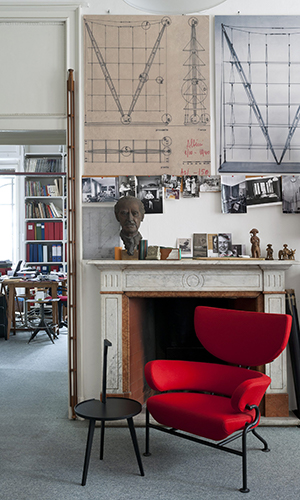
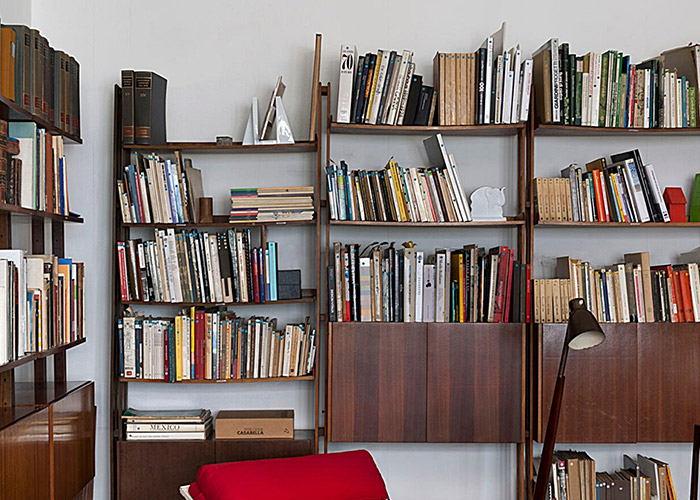
Fondazione Achille Castiglioni
Achille Castiglioni is an architect and designer who, since 1940, had been experimenting with industrial products together with his brothers Livio and Pier Giacomo. A career characterized by incessant research into forms, techniques and new materials, aimed at the realization of an integral design process. The design activity took place initially in a studio in C.so di Porta Nuova, which was later demolished, and later in what has become today the foundation in P.zza Castello 27. The Foundation’s main purpose is to catalog, archive and narrate all his work and the world within which Achille Castiglioni operated for more than sixty years, first with his brother Pier Giacomo, then from 1968, alone.
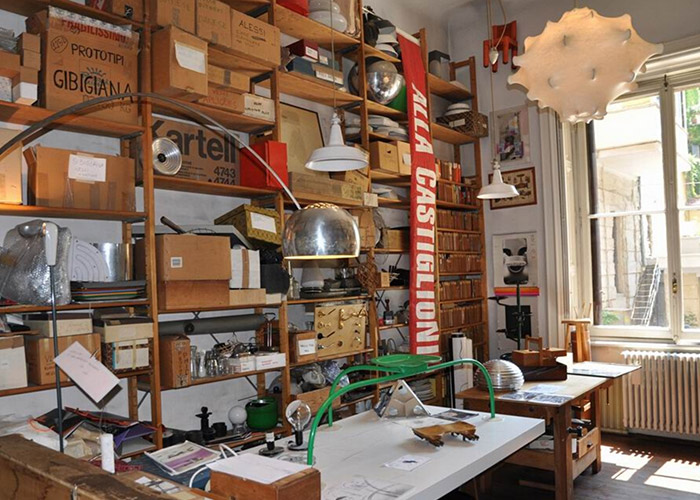
Inside you can find objects such as Mezzadro, a stool produced by Zanotta in 1971, which opens the use of existing objects in different places and contexts of use. In fact, the stool was made by taking and adapting the seat of a tractor.
Sella is another of the original seats designed by Castiglioni and produced by Zanotta. Made with industrial elements, it features a bicycle saddle as a seat (hence the name) mounted on a metal tube supported by a spherical base, with a dynamic balance. The design idea stems from the desire to offer people a comfortable seat while speaking on the phone, which was typically placed on a wall at the time, hence the definition of Phone Stool.
Moving on, another design element is the Leonardo table. A table top, in white laminate or crystal, supported by two height-adjustable beech stands.
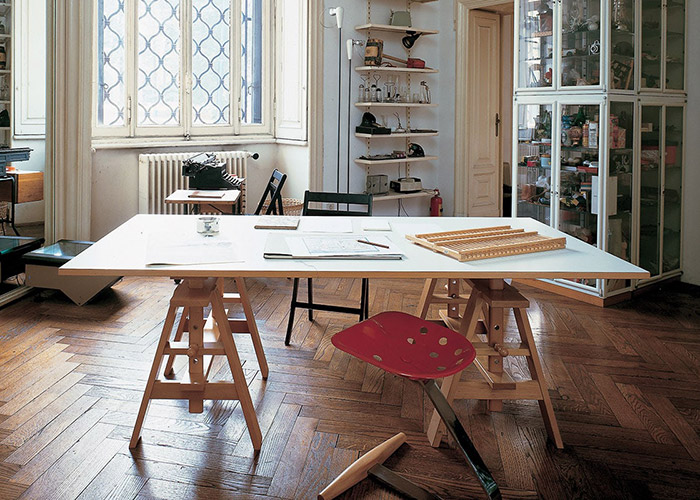
Casa Fornasetti
Piero Fornasetti was one of the most brilliant, creative and original minds of the twentieth century. An eclectic and versatile figure, with an avant-garde vision of making culture and beauty accessible to everybody, creator of fantastic and metaphysical worlds while always maintaining a focus on functionality.
In the 50s, in the Città Studi area, Casa Fornasetti became the artist’s atelier. A place where you can live an immersive experience within the imaginary and visual language of Fornasetti, a laboratory where you can experiment with patterns and colors, with spaces overflowing with projects, original furniture and sources of inspiration.
Today, the atelier is home to the historical archives, the graphic design studio, the communication and marketing department, as well as being the private home of his son Barnaba Fornasetti, who now leads the company and the brand.
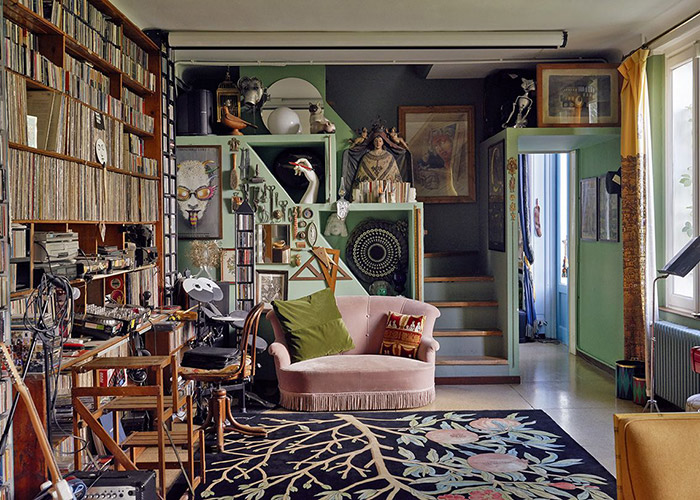
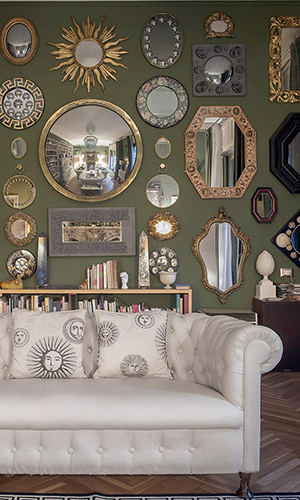
A look into the Milanese Interior Design of 5 Artists and Collectors
Fondazione Arnaldo Pomodoro
Arnaldo Pomodoro is an Italian self-taught goldsmith and sculptor. After debuting in the artistic field, he decided to open his own studio in Milan in the ’60s. The atelier is located in Via Vigevano and was renovated for him by the architect Gregotti. A surreal place where his works take shape and life, immersed in the atmosphere of Milanese interior design in the 50s, radiated by natural light and characterized by trees, sculptures, instruments and models of the artist.
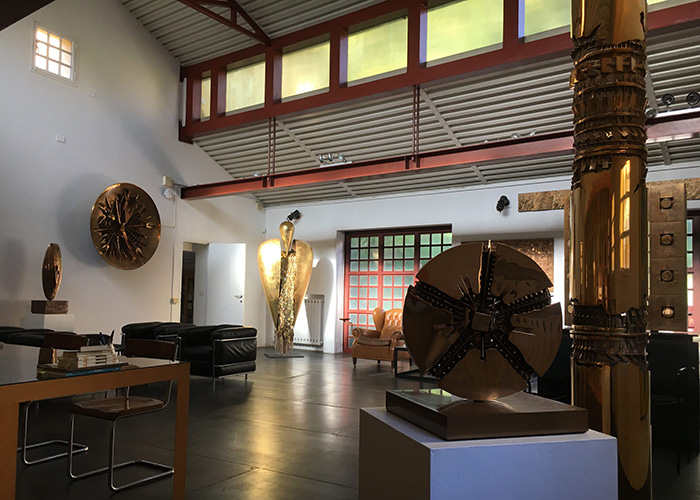
In Pomodoro there is a strong need to search for poor and malleable materials, as well as an attachment to the earth and the things of the world. Other inspirations derive from the artists Paul Klee, Brancusi and Boccioni, as well as from the journeys he’s been on. The intent of his art is to leave a mark. His language is therefore developed through a constant dualism between inside and outside, past and future and the dialogue, the relationship that his works establish with the space and the surrounding public.
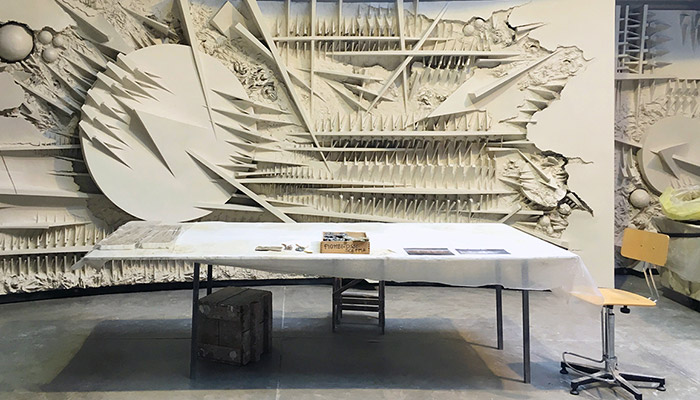
Studio Museo Francesco Messina
Together with Giacomo Manzù, Arturo Martini and Marino Marini, Francesco Messina is considered one of the major exponents of figurative sculpture of the twentieth century. Artistically born in the Genoese workshops, Messina began to exhibit his works at a very young age in the most prestigious international events.
Francesco Messina’s sculpture, so full of echoes of the Greek-Roman and Hellenistic classical heritage, “is characterized”, wrote Carlo Carrà, by “a simple and grandiose way of doing and for an idealistic and classical procedure able to give life to forms that remain as ideal images”. Among his works we can not fail to mention the St. Catherine of Siena on the Tiber embankment of Castel Sant’Angelo, the Way of the Cross in San Giovanni Rotondo, the famous dying horse of RAI, the Monument to Pius XII in St. Peter’s Basilica.
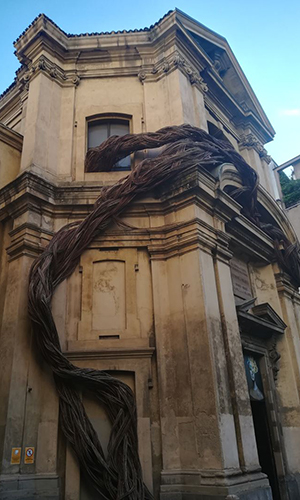
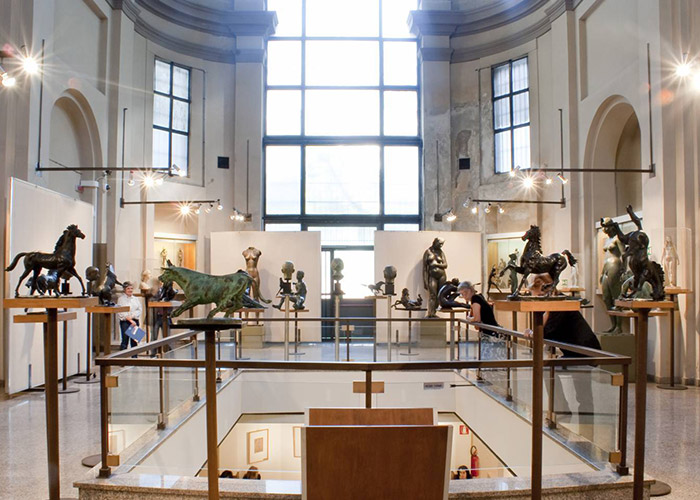
In 1974, he opened the Civic Museum-Studio Francesco Messina, housed in the old deconsecrated church of S. Sisto in typical Milanese Architecture, which was also the artist’s studio for several years. The museum exhibits about eighty sculptures (plaster casts, polychrome terracottas, bronzes, waxes) and about thirty graphic works (lithographs, pastels, watercolors, pencil drawings).

Casa Museo Boschi Di Stefano
The Casa Museo Boschi Di Stefano is a historic home on Via Giorgio Jan designed by Piero Portaluppi, master of Milanese architecture. Antonio Boschi and Marieda di Stefano lived here: the couple who, over the course of a lifetime, amassed an extraordinary collection of 20th century contemporary art. The collection represents an extraordinary testimony to the history of 20th century Italian art – including paintings, sculptures and drawings – from the first decade of the 20th century to the end of the 1960s. In the rooms of their apartment are now exhibited about three hundred pieces selected among the more than two thousand paintings and sculptures collected and donated to the City of Milan in 1974, including works by Umberto Boccioni, Mario Sironi, Giorgio de Chirico, Giorgio Morandi, Lucio Fontana, Piero Manzoni and many others.
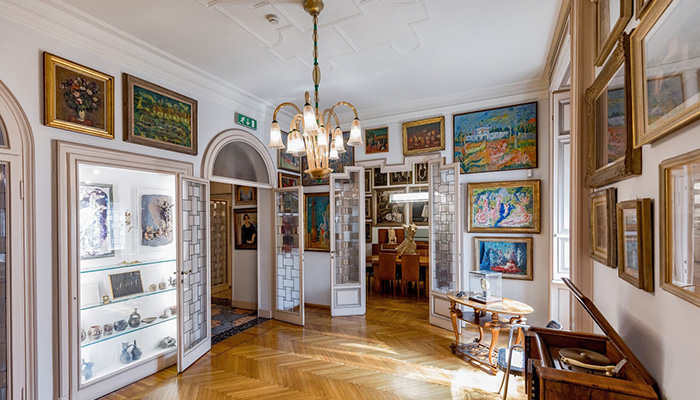
In the eleven exhibition spaces in Milanese interior design style, the works have been distributed by adopting a criterion of chronological succession and qualitative selection curated by Maria Teresa Fiorio, former Director of the Civic Art Collections of Milan.
At the entrance there are portraits dedicated to the Boschi couple and ceramics by Marieda herself, then through a corridor with canvases by Severini and Boccioni we reach the “Sala del Novecento italiano” with works by Funi, Marussig, Tozzi, Carrà and Casorati. In the “Sironi room“, entirely dedicated to the artist, there are sculptures by Arturo Martini. The next room includes the Gruppo di Corrente, seven Moranti and six De Pisis. In a small corridor are gathered the Chiaristi, while continuing the visit we reach the room of the “Italiens de Paris”: Campigli, Paresce, Savinio and de Chirico. The “Fontana room” displays a precious set of twenty works, while the last two rooms are reserved for Picasso’s post-cubists, the Spatialists, the nuclear and informal painters, including Piero Manzoni with his famous Achrome.
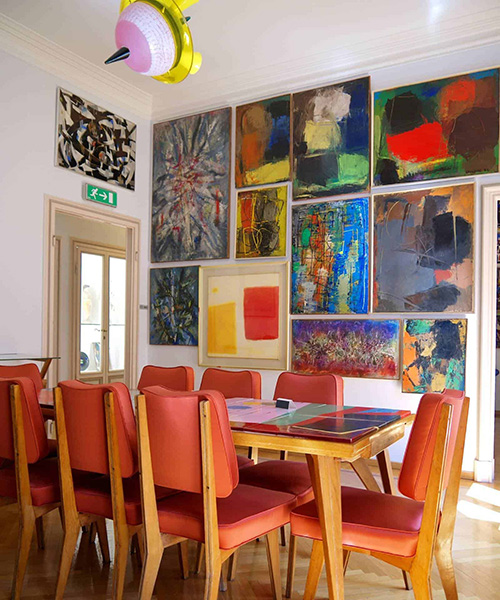
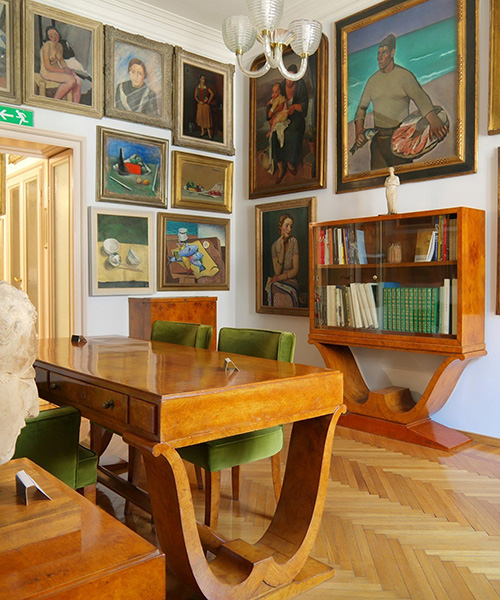
Villa Necchi Campiglio
Secluded in the heart of an elegant and quiet district in the center of Milan, Villa Necchi Campiglio was designed in the early ’30s by Piero Portaluppi, the great master of Milanese architecture, commissioned by the sisters Nedda and Gigina Necchi with Angelo Campiglio, Gigina’s husband, exponents of a cultured Lombard industrial bourgeoisie in step with the times. Their standard of living is evidenced by the building, designed and built with no budget limits, by the emerging Milanese interior design style (Italian Rationalism), by the spacious and bright rooms of which the residence is composed, by the furnishings, the decorative arts and the evolved and daring craftsmanship of the artifacts.
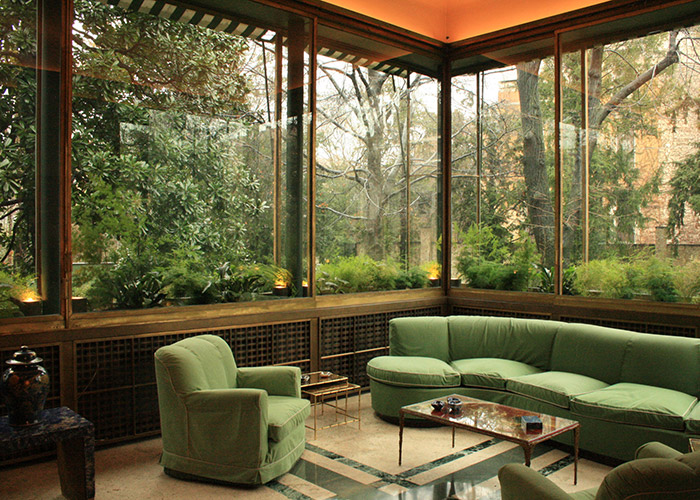
The villa, in Milanese architecture style, is set back from the road, to ensure the tranquility and privacy of residents and guests, and is located in a beautiful garden complete with a tennis court and a swimming pool (among the first private ones in the city). The house is marked by large linear volumes; while the ground floor served as a prestigious representation area, with the magnificent veranda on the garden, the upper floor was used as a sleeping area. The splendor of déco furniture, objects of use and important pieces of art has been enhanced in recent times by the bequest of the de’ Micheli and Gian Ferrari collections, abundant in works: from Tiepolo and Canaletto to Sironi, De Chirico, Martini and Wildt. Since November 2017, the villa has been enriched by the Guido Sforni Collection: 21 works on paper by great artists of the twentieth century such as Picasso, Fontana, Modigliani, Matisse and others.
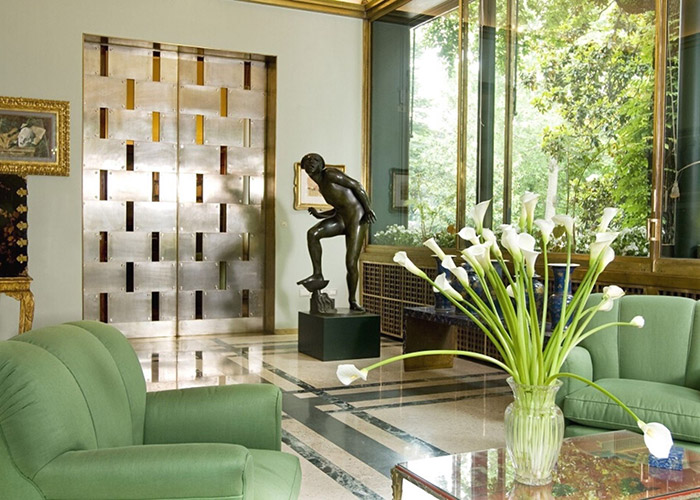
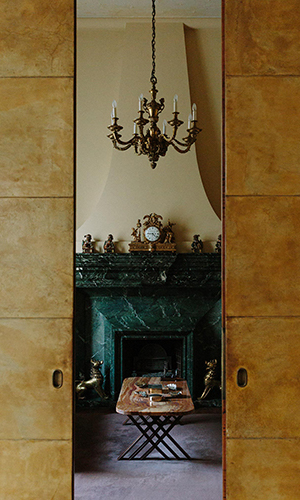
Casa degli Atellani
The mansion dates back to the time of Ludovico il Moro, during which the Lord of Milan granted numerous building permits to courtiers and collaborators, wishing to make the road axis of the ancient borough of Porta Vercellina a prestigious boundary for the newly built church of Santa Maria delle Grazie. The Duke, after buying the house in 1490 from the Landi family, Counts of Piacenza, donated it to the family of Atellani, his courtiers: the house became famous for the parties organized by the owners, also described in many chronicles of the time, which brought together the greatest personalities of the Sforza court.
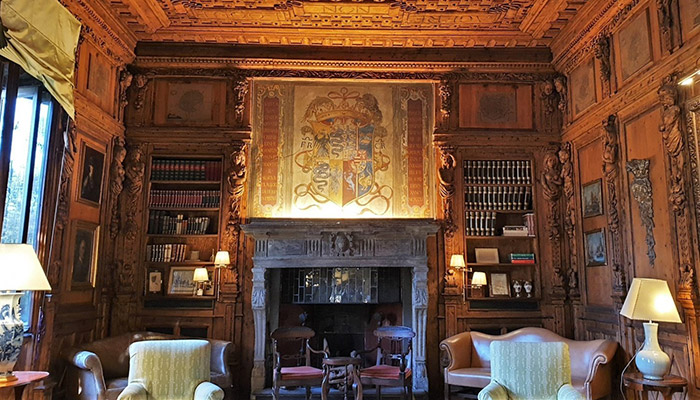
After many changes of ownership over the centuries, it fell into the hands of the Conti family, who in 1922 had the house restored by the architect Piero Portaluppi, one of the Masters of Milanese Architecture, who radically reformed the distribution of the rooms and articulated the spaces according to the rituals of an upper middle class residence. The eccentric and sometimes amazing synthesis between elements of the traditional architectural lexicon and new decorative apparatuses, well harmonized with the taste of historical eras gone by, illustrate Portaluppi’s peculiar ability to use tradition and invention in an inseparable melting pot, articulating in the design of the facades and surfaces of the interiors an unmistakable syntax.
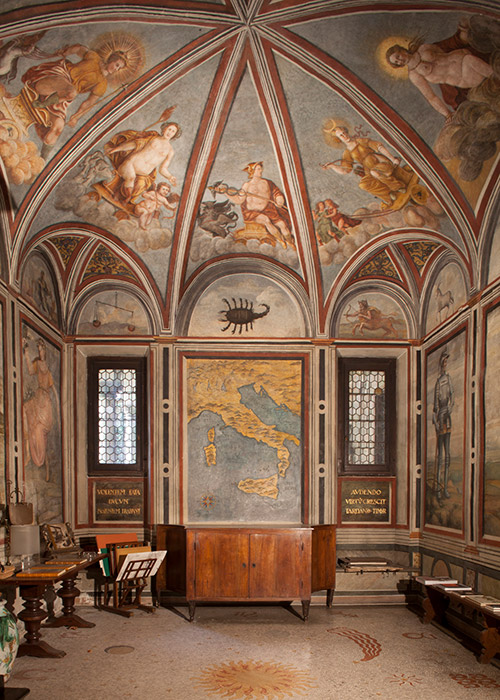
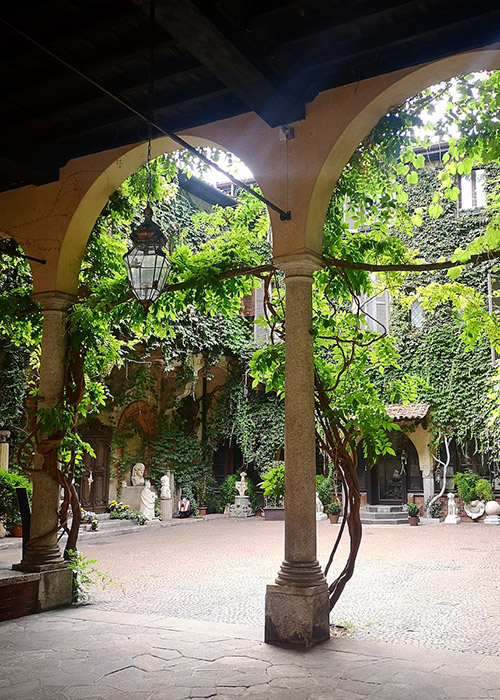
Museo Bagatti Valsecchi
The Bagatti Valsecchi Museum is a house-museum resulting from an extraordinary collector story of the late nineteenth century, which has as its protagonists two brothers: the Barons Fausto and Giuseppe Bagatti Valsecchi. Starting in the 1880s, the two brothers dedicated themselves to the renovation of the family home located in the heart of Milan: a building in Milanese Architecture style between Via Gesù and Via Santo Spirito, today at the center of the fashion quadrilateral. At the same time, the two brothers began to collect paintings and artifacts of applied arts of the 15th and 16th centuries with the intention of setting them up in their home to create a residence inspired by the homes of 16th century Lombardy.
After the death of Fausto and Giuseppe, the Bagatti Valsecchi house continued to be inhabited by their heirs until 1974, the year when the Bagatti Valsecchi Foundation was established. The precious heritage of works of art collected by the two brothers was donated to the Foundation. Twenty years later, in 1994, the Bagatti Valsecchi Museum opened to the public, one of the best preserved house museums in Europe and one of the first great expressions of Milanese design.
.
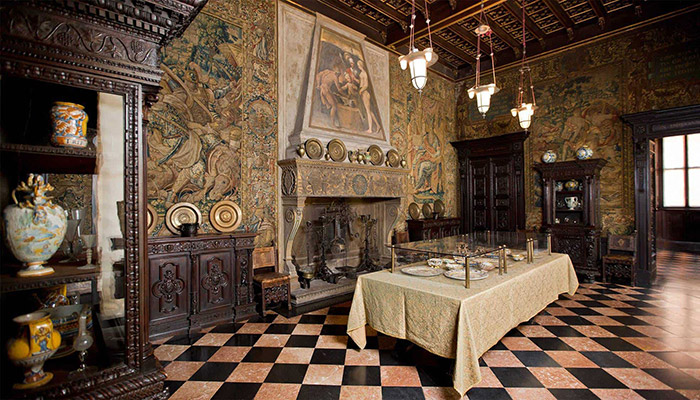
Preserved in respect of the nineteenth-century layout, the collections unfold from room to room: in the enveloping rooms of the house museum, important antique paintings by artists such as Giovanni Bellini, Bernardo Zenale, and Giampietrino find their place next to pastille caskets, wooden furniture, and glass or ceramic artifacts. Beyond their intrinsic value, each work constitutes a piece of the coherent Bagatti Valsecchi project and contributes to defining its spectacular whole.
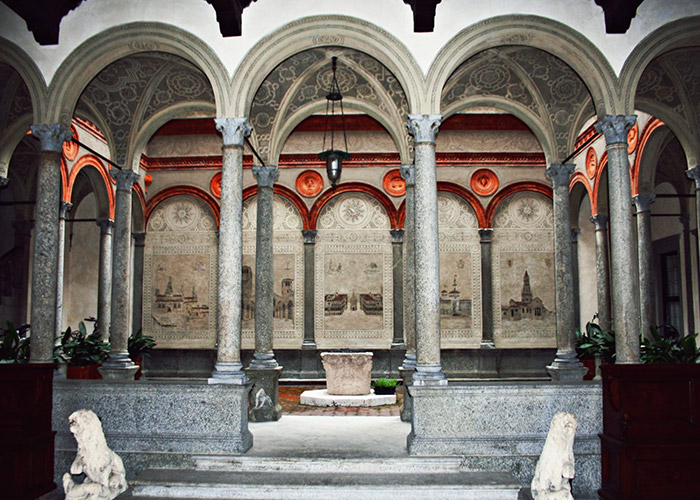
Take a Grand Tour of Italy
In this exciting discovery of the most beautiful houses of Milanese architecture on display, don’t miss the top Milan art and design galleries, great places to explore if you’re looking for inspiration. Along with the city’s fine furniture shops, it’s a chance to sample a taste of the best of the best. Actually, why don’t you join us on our customized furniture shopping tour.
We can organise a tailored experience including visits to the finest Italian laboratories and ateliers, helping you to choose products for your home, as well as providing in-depth recommendations about the most comfortable luxury hotels in the city. And if design is what you are really into, we have a list of the ten best Italian design hotels ready for you!
We also offer interior design services including a Furniture Selection & Supply Service where you can browse furnishings with dozens of brands to select. We understand the value of luxury furnishings, which is why we ensure the necessary care is given to sourcing every piece. Our experts are available to assist you throughout your project as well as offer an assembly service if needed.
We are ready to take on the hard work while you sit back and enjoy the beauty of Italy. Not leaving anything to chance, we have drawn up a list of Milan’s chicest restaurants and most luxurious spas so you can really put your feet up as we help you make your dream home come true.
Your unique Interior Design Project developed by Italian Professionals.
Discover and shop Made in Italy while living the Italian lifestyle in Milano.


